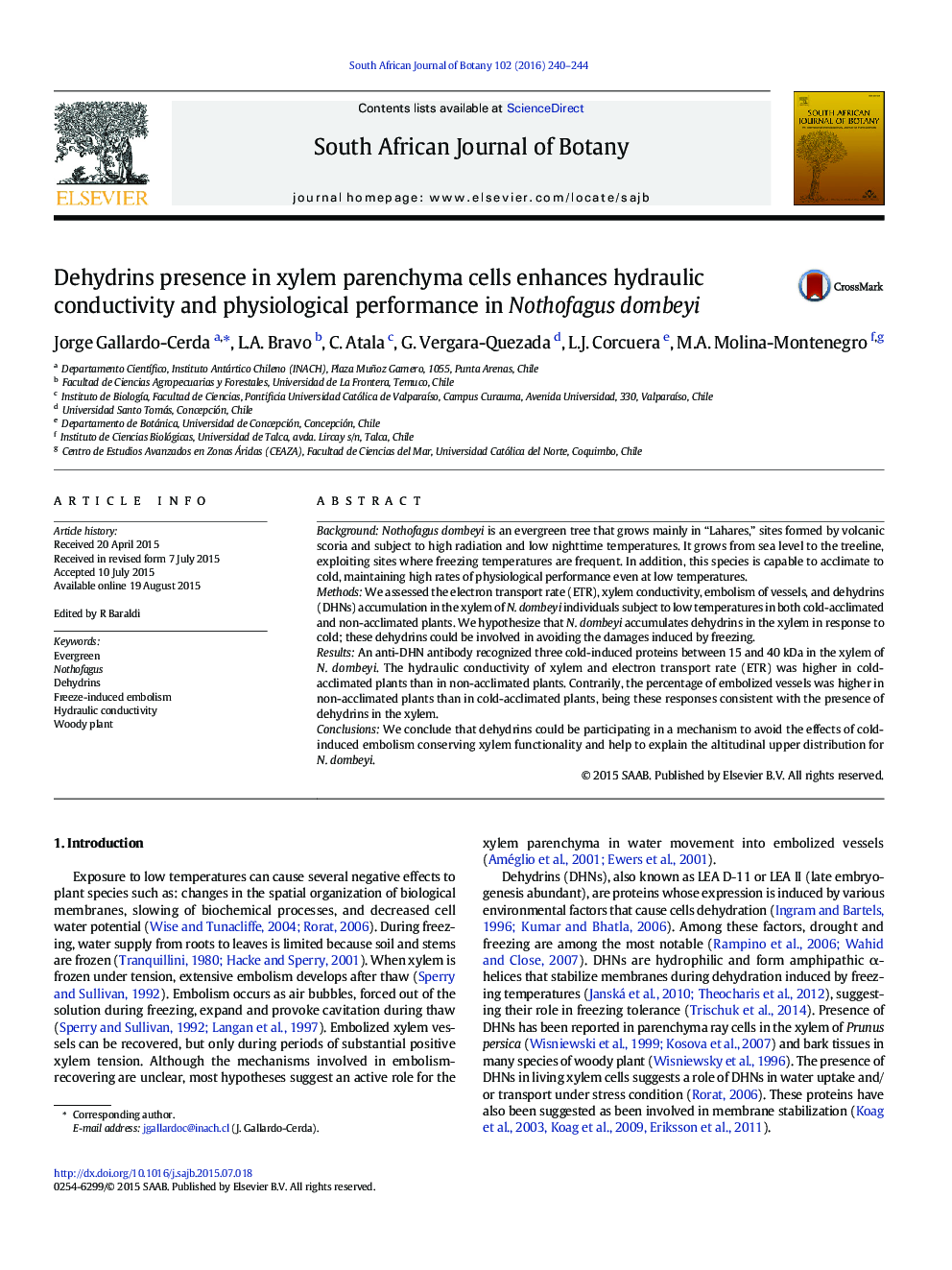| کد مقاله | کد نشریه | سال انتشار | مقاله انگلیسی | نسخه تمام متن |
|---|---|---|---|---|
| 4520172 | 1625156 | 2016 | 5 صفحه PDF | دانلود رایگان |
• We describe the accumulation of dehydrins in parenchyma of Nothofagus dombeyi after freezing.
• The hydraulic conductivity when dehydrins are present is similar to non freezing control individuals.
• We propose a new role of dehydrins.
• The presence of dehydrins in parenchyma is observed only in response too low temperature or freezing.
• The capacity of Nothofagus dombeyi to colonize stressed environment and presence of dehydrins is discussed.
BackgroundNothofagus dombeyi is an evergreen tree that grows mainly in “Lahares,” sites formed by volcanic scoria and subject to high radiation and low nighttime temperatures. It grows from sea level to the treeline, exploiting sites where freezing temperatures are frequent. In addition, this species is capable to acclimate to cold, maintaining high rates of physiological performance even at low temperatures.MethodsWe assessed the electron transport rate (ETR), xylem conductivity, embolism of vessels, and dehydrins (DHNs) accumulation in the xylem of N. dombeyi individuals subject to low temperatures in both cold-acclimated and non-acclimated plants. We hypothesize that N. dombeyi accumulates dehydrins in the xylem in response to cold; these dehydrins could be involved in avoiding the damages induced by freezing.ResultsAn anti-DHN antibody recognized three cold-induced proteins between 15 and 40 kDa in the xylem of N. dombeyi. The hydraulic conductivity of xylem and electron transport rate (ETR) was higher in cold-acclimated plants than in non-acclimated plants. Contrarily, the percentage of embolized vessels was higher in non-acclimated plants than in cold-acclimated plants, being these responses consistent with the presence of dehydrins in the xylem.ConclusionsWe conclude that dehydrins could be participating in a mechanism to avoid the effects of cold-induced embolism conserving xylem functionality and help to explain the altitudinal upper distribution for N. dombeyi.
Journal: South African Journal of Botany - Volume 102, January 2016, Pages 240–244
